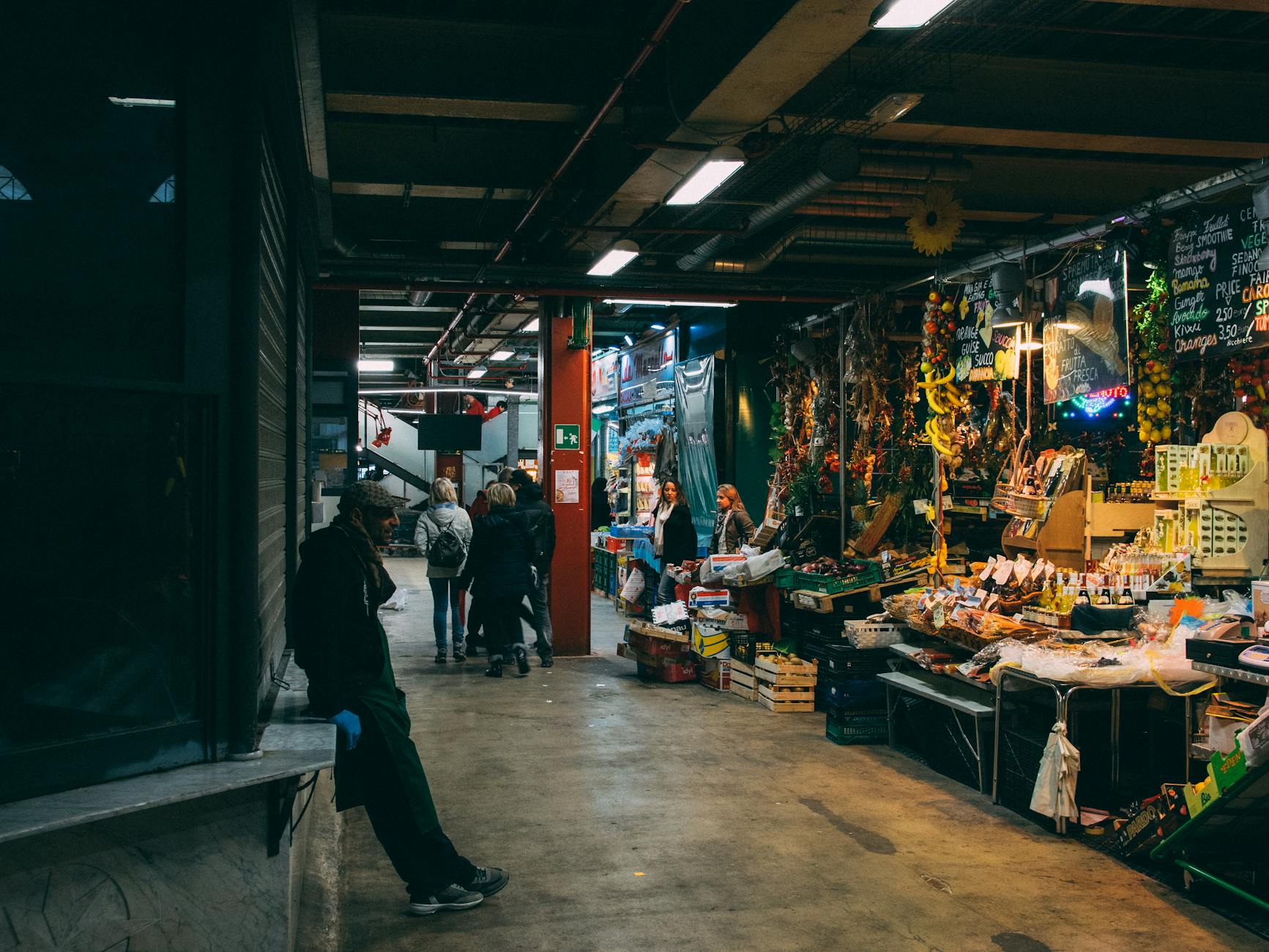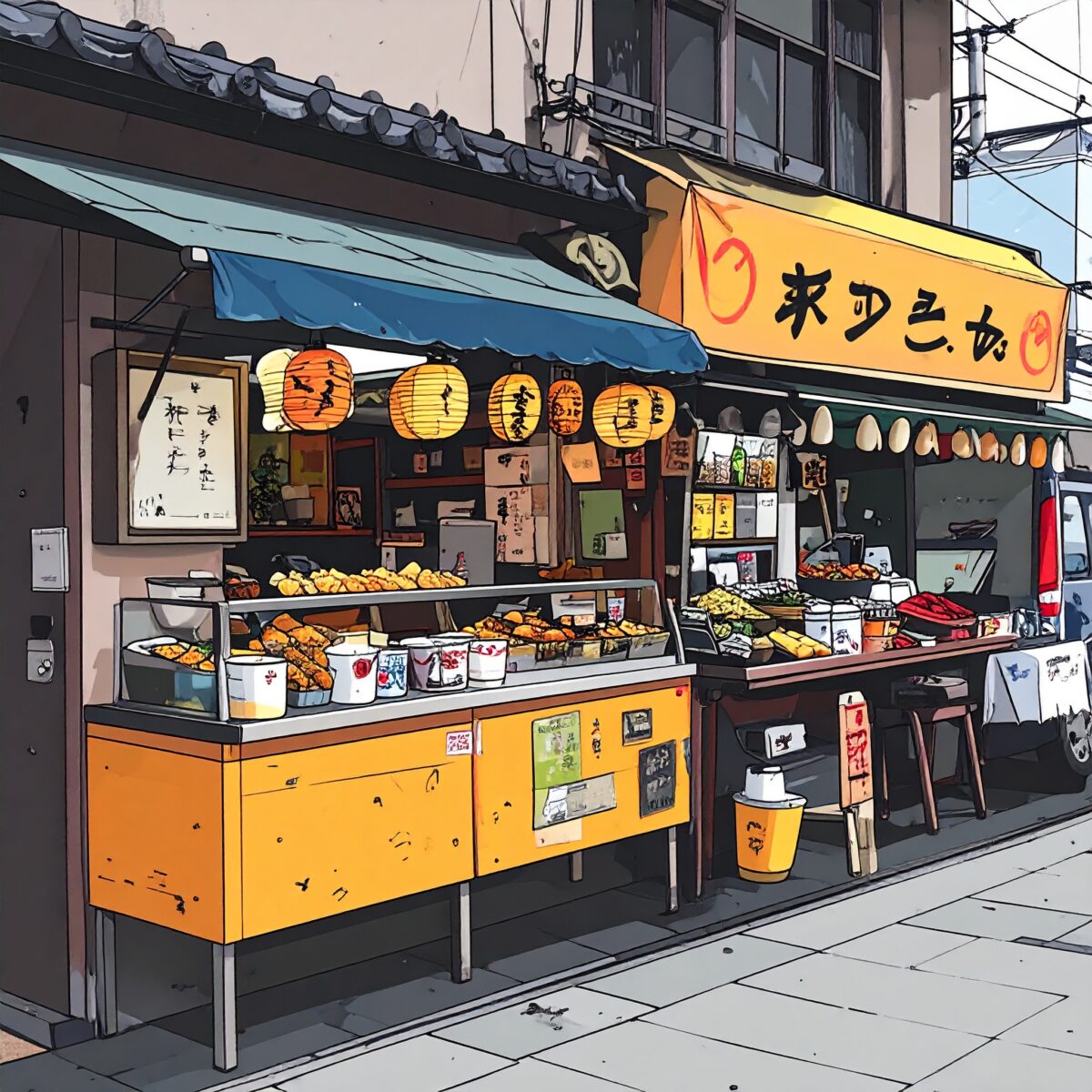Across many Asian cities at night, street-side stalls emerge to enliven the streets—Bangkok, Taipei, Ho Chi Minh, Seoul. These vibrant scenes of food and movement become the “face” of the city, transcending mere dining. Japan once had similar moments in its towns, but those scenes largely faded over time. In contrast, Fukuoka—the largest city in Kyushu—still maintains a vibrant and distinctive yatai culture that exudes character and presence.
Licenced yatai line the streets of Fukuoka, lighting up from early evening to late night without regard for the weather—a nightly landmark not just for travelers, but for locals as well. Such an urban acceptance and nurturing of street-side stalls, integrated into the city fabric and still evolving, is exceptionally rare in Japan.
There is historical depth behind this phenomenon. During the post‑war recovery era, when food scarcity and a weak restaurant industry prevailed, yatai served as essential “places to eat” and to gather. As other cities phased them out for health, safety, and regulatory concerns, Fukuoka took a different path—not merely preserving yatai, but choosing to coexist and adapt with them.
Through thoughtful regulation and collaboration with local authorities, Fukuoka has established a clear and legal framework that allows yatai to operate safely and sustainably. While new entrants are regulated, the result is not a nostalgic relic, but a living, dynamic food ecosystem—coexisting with public space and evolving to meet contemporary urban needs.

Fukuoka’s yatai—not merely street stalls—are thoughtfully integrated into the city’s pedestrian zones, riverbanks, business districts, and tourist hubs. Unlike typical perceptions of yatai as cluttered or unsanitary, Fukuoka’s are maintained as luminous, characterful fixtures that harmonize with each neighborhood. With clearly defined operating hours, fixed locations, and regularly renewed permits, they avoid disorder and blend seamlessly into the cityscape.
Moreover, many of these yatai have operated in the same spots for decades, becoming woven into the collective memory of the city. From office workers after hours, tourists, and international students, to neighborhood elders, young couples, and solo diners—all sit side by side at the counter, effortlessly sparking conversation. In a world inclined toward digital isolation and individualized lifestyles, these yatai represent rare and valuable social nodes—spaces that invite genuine human connection in the heart of urban life.
The intimate scale and proximity of Fukuoka’s yatai naturally dissolve psychological barriers. While classic offerings like ramen, yakitori, oden, and tempura remain at the core, a new wave of yatai—run by young entrepreneurs—serves up French and international fare. This harmonious coexistence of tradition and innovation within compact spaces offers a compelling vision of urban diversity and possibility.
Across Asia, redevelopment often sidelines or bans street stalls. Yet Fukuoka’s yatai have become experimental hubs for reimagining public space. Operators are required to undergo hygiene and hospitality training, and many now offer multilingual menus and embrace cashless payments to better serve visitors from around the world.

These initiatives around Fukuoka’s yatai are not just about running street stalls—they reflect a broader vision of how such “places” can function as part of a city’s infrastructure. Yatai are more than eating machines; they are microcosms where strangers sit shoulder-to-shoulder, exchange words, and dissolve the boundaries between everyday life and unexpected moments.
For decades, many Asian cities, in their pursuit of rapid economic growth, treated street stalls and other informal urban features as relics to be cleared away. Yet as urbanists increasingly value chance encounters and unstructured spaces, Fukuoka’s yatai offer a compelling case study: how to preserve and nurture these elements within a modern metropolis.
In an age marked by rationalization and sterile urban design, Fukuoka’s yatai remind us what it means to be human. The steam rising from pots, the hushed chatter across counters, the simple act of sharing time and temperature—these are not elements we can fully engineer or standardize. They emerge organically, from the soft, unscripted relationships that form between city and citizen.
If tomorrow’s cities aim to preserve not only efficiency and technology, but human warmth, unpredictability, and generosity, then Fukuoka’s yatai culture offers guidance. These humble stalls are more than dining spots: they are symbols of urban plurality and tolerance, functioning as living circuits that subtly reconnect people—and societies—with the art of being present together.




